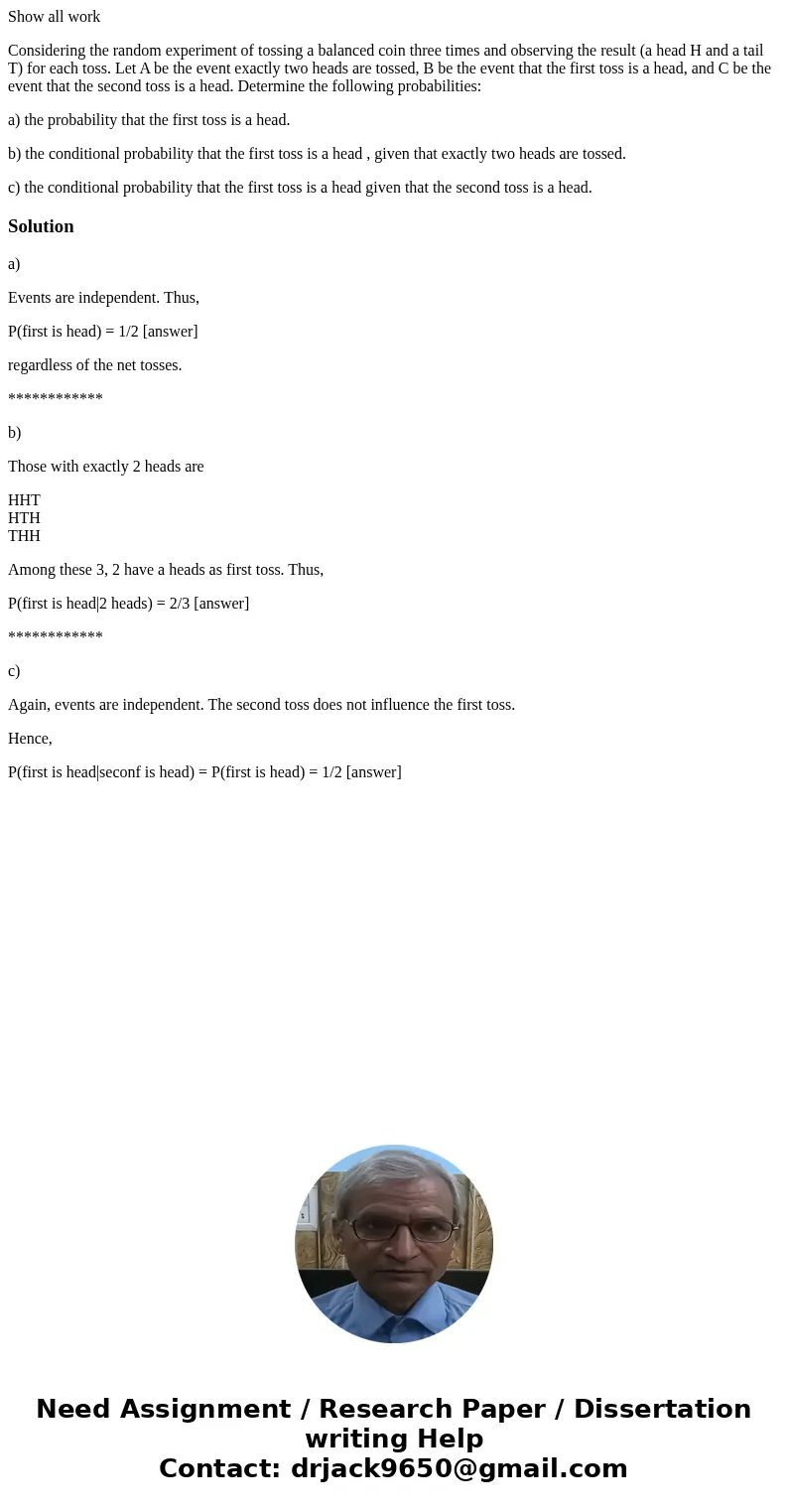Show all work Considering the random experiment of tossing a
Show all work
Considering the random experiment of tossing a balanced coin three times and observing the result (a head H and a tail T) for each toss. Let A be the event exactly two heads are tossed, B be the event that the first toss is a head, and C be the event that the second toss is a head. Determine the following probabilities:
a) the probability that the first toss is a head.
b) the conditional probability that the first toss is a head , given that exactly two heads are tossed.
c) the conditional probability that the first toss is a head given that the second toss is a head.
Solution
a)
Events are independent. Thus,
P(first is head) = 1/2 [answer]
regardless of the net tosses.
************
b)
Those with exactly 2 heads are
HHT
HTH
THH
Among these 3, 2 have a heads as first toss. Thus,
P(first is head|2 heads) = 2/3 [answer]
************
c)
Again, events are independent. The second toss does not influence the first toss.
Hence,
P(first is head|seconf is head) = P(first is head) = 1/2 [answer]

 Homework Sourse
Homework Sourse